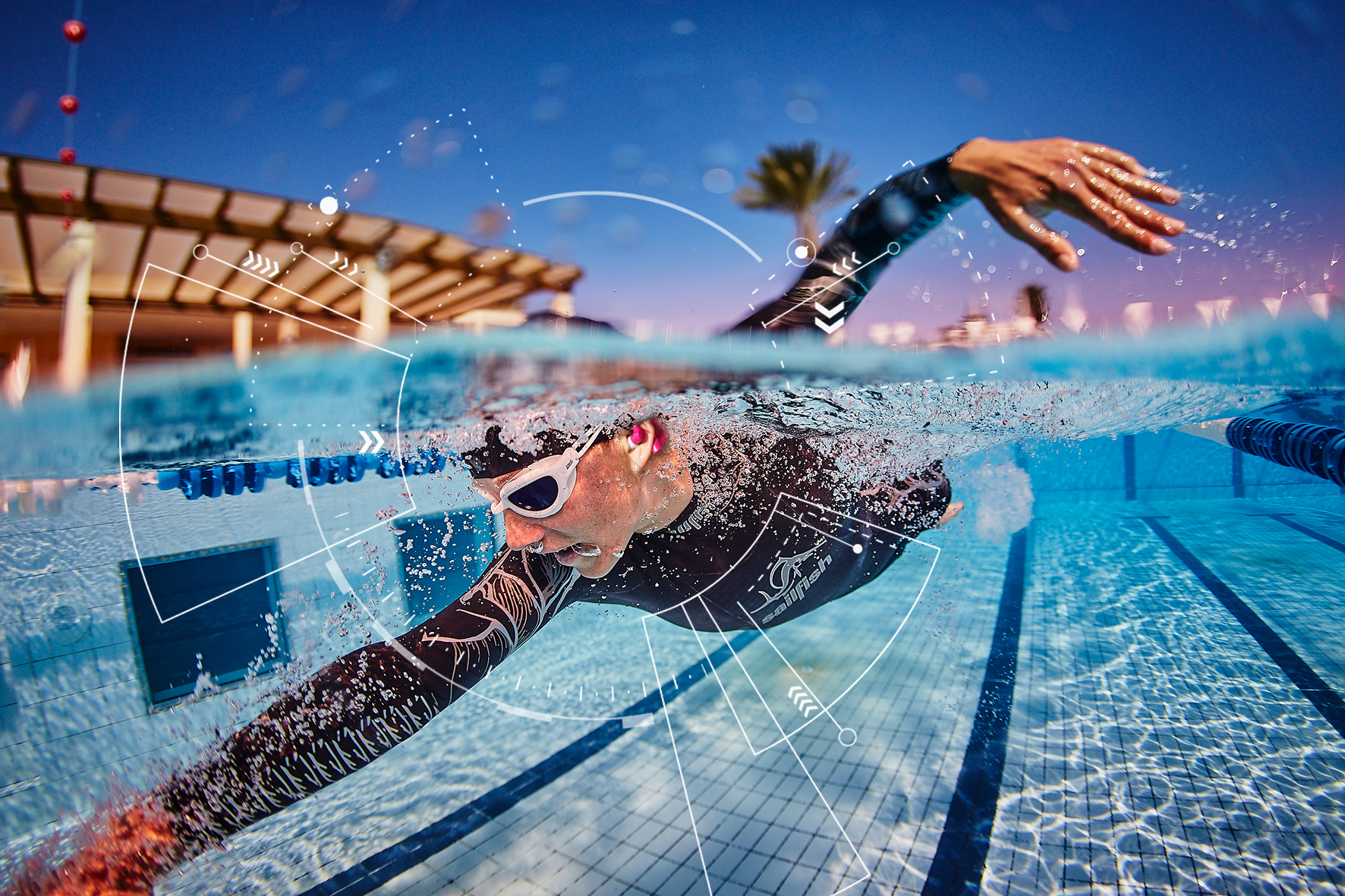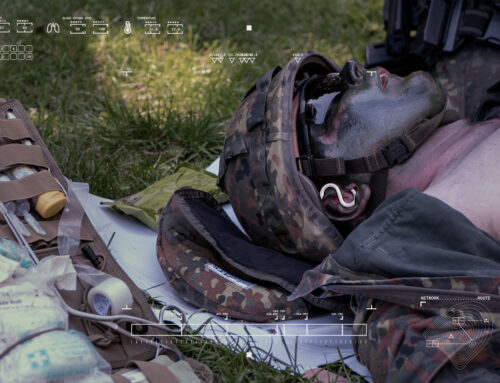Master thesis by Ralph Heim, medical engineer
“Concept and prototype development of a sensor system for the evaluation of swimming specific vital and acceleration parameters”.
Measuring performance-specific parameters and vital data with modern wearables during running and cycling is now commonplace even among amateur athletes. However, there has been little technological progress in swimming. The analog watch at the poolside is still considered the measuring instrument of choice. Records of swimming-specific performance parameters, such as the push-off speed after the turn, do not take place in daily training.
For this reason, the goal of my master’s thesis was to adapt the fitness and vital signs tracker cosinuss° One and Two, respectively, so that it can be used in the water to investigate which swimming-specific parameters can be recorded. Initial adaptations of the cosinuss° measurement system were used to develop a prototype and a suitable concept for recording not only heart rate and body temperature but also corresponding acceleration data during swimming. On the one hand, the system was to meet requirements from a sports science perspective. On the other hand, it was to serve as an illustration of applied teaching content for teaching staff and students in science classes as part of the STEM on the Move project funded by the German Federal Ministry of Education and Research (BMBF).
cosinuss° measurement technology
The technology used by cosinuss° offers fundamental advantages for use while swimming. First of all, a measurement well protected from water can take place in the ear. Furthermore, swimming-specific acceleration measurements are theoretically possible thanks to the accelerometer already integrated. An internal data memory in the sensor also allows subsequent analysis of the data, so that Bluetooth connection interruptions in the water do not cause any problems. In addition, the system offers the potential for more efficient and automatic student swimmer and athlete monitoring: a coach can supervise several swimmers simultaneously and then analyze the recorded data.
Adaptation and used technique of the °Two and °One sensors
In the master thesis, different concepts or variants and prototypes were developed and tested.
Water resistance
The application of the in-ear sensor in water requires water resistance. To ensure this, various methods of sealing were tested (see Fig. 1).
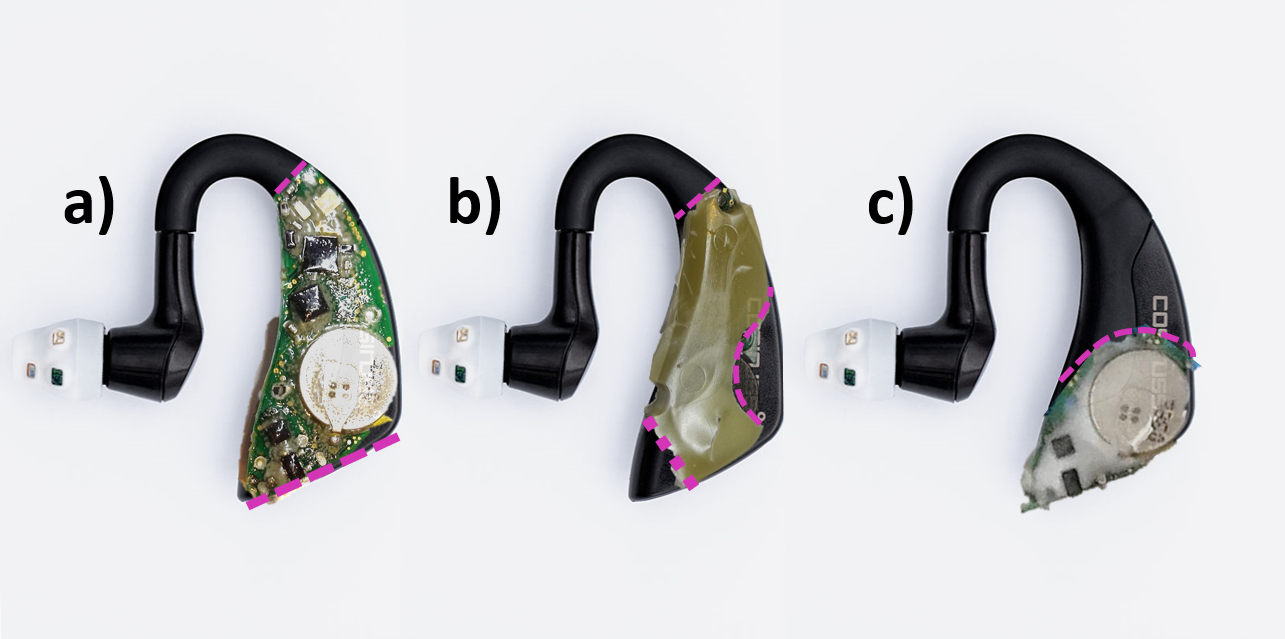
Fig. 1: Sealing methods of prototypes by casting resin: a) Coating of hardware based on polyurethane (applied with brush) b) Complete potting based on polyurethane c) Complete potting based on silicone + hollow glass microspheres.

Fig. 2: Underwater test. The sensors were submerged for two hours.
Water shield
Different positioning and sealing systems were tested to reduce and investigate the influence of water on vital sign measurements:
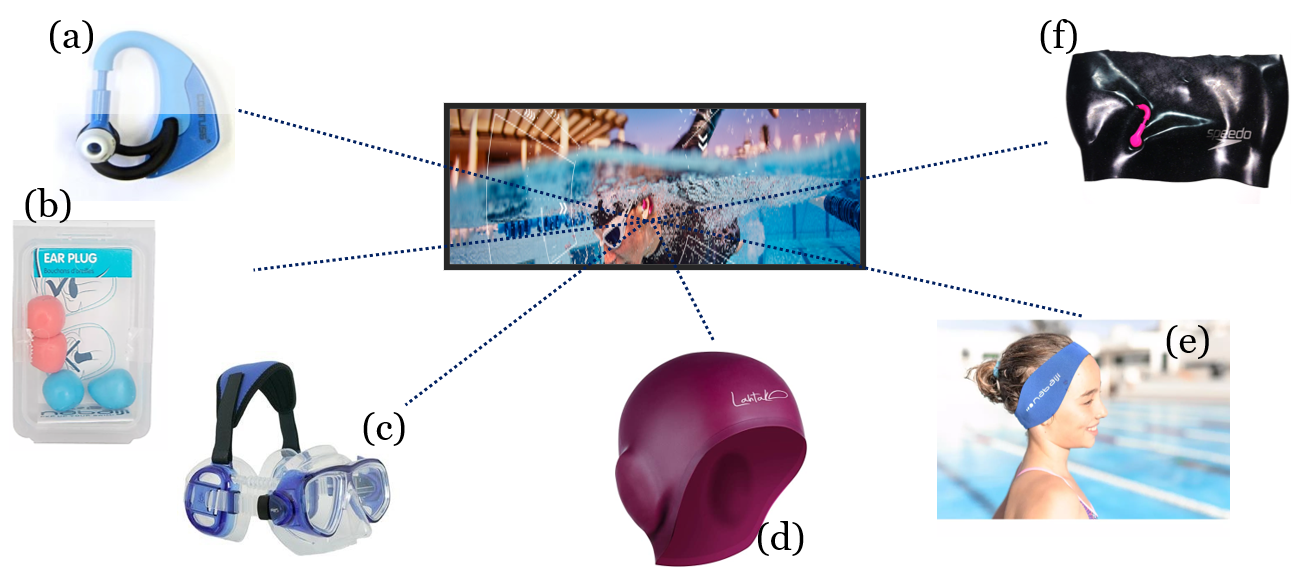
Fig. 3: Overview of all positioning/sealing systems.
Accelerometer
The 3D accelerometer already integrated in the in-ear sensor was used to measure the following swimming-specific parameters:
- Push-offs
- Number of pulls
- Glide phases
- Breathing rate
Previous acceleration measurements with the cosinuss° sensor were mainly used for artifact detection in the context of heart rate measurements. In the master thesis it was tested to what extent the in-ear sensor can also be used for recording during swimming-specific movements.
Signal processing of the acceleration data
In the context of the STEM on the Move project, the focus was placed on breaststroke swimming, since a mastery of this swimming technique can be expected from middle school students.
The following swimming-specific parameters could be calculated and investigated from the acceleration signal by means of evaluation in the Python programming language1:
- Push-off acceleration/speed
- Swimming strokes per lane
- Detection of turns
- Time per lane
- Glide phase after the turns
- Breathing rate
Vital signs measurement
For the evaluation of the heart rate and temperature measurements the existing
cosinuss° algorithm was used.
The pulse rate is measured using the reflection method of photoplethysmography (PPG). Here, emitted light from the LED integrated on the sensor is shone into the tissue of the ear canal and the emerging light is measured by the photodiode.
The body temperature is measured by means of a contact temperature sensor, which enables the measurement of the body temperature by contacting the ear canal wall (calibration by software to ±0.1°C).
Results
Measurement results swimming strokes and turns
Figure 4 shows the acceleration curve for breaststroke. The pulls per lane, push-offs and tilt-turns can be seen well through the acceleration maxima.
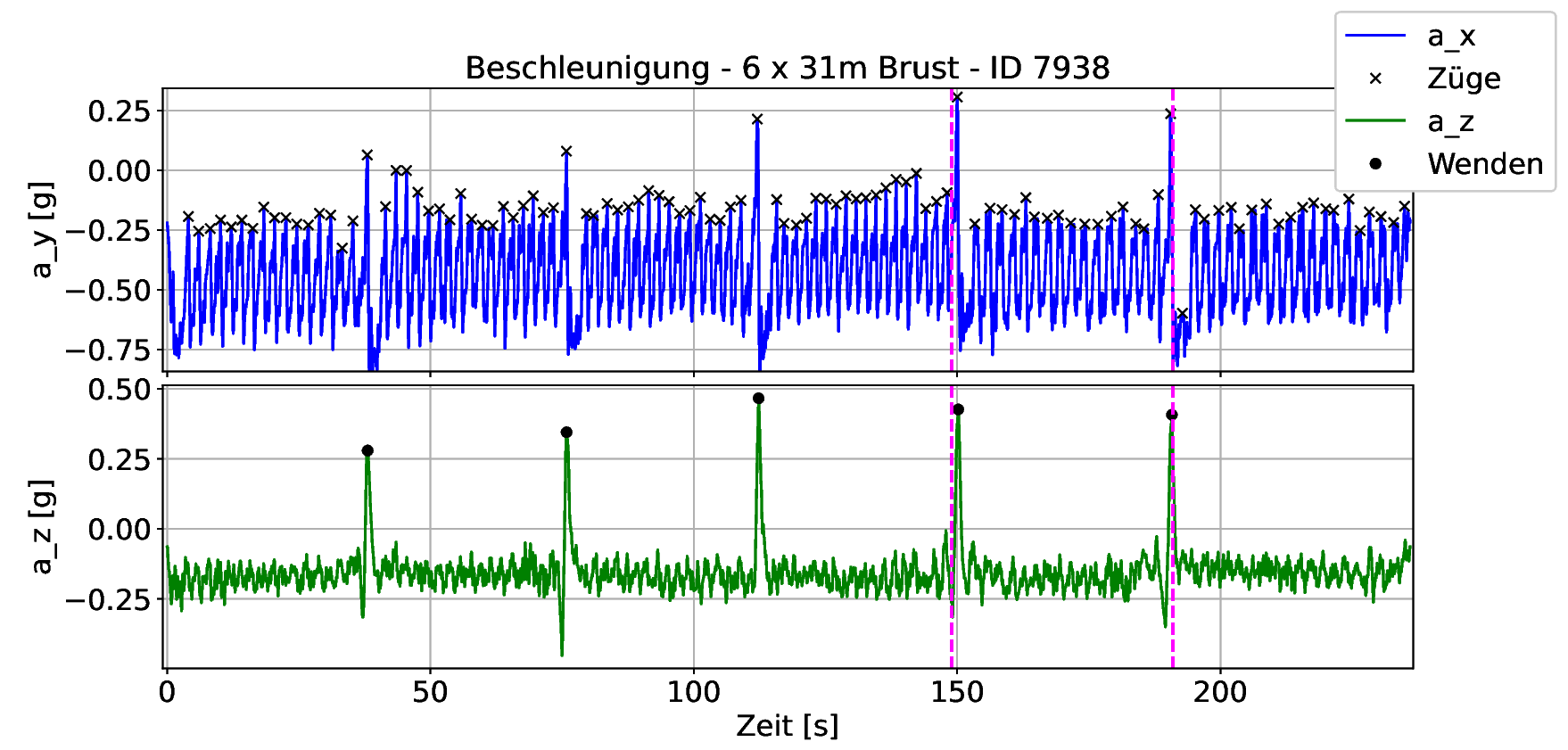
Fig. 4: Example extract for swimming strokes and turns (31m lane in Müllersche Volksbad, Munich). Measured acceleration in x-direction (blue in [g]), acceleration in z-direction (green [g]) during a recording of 6x31m breaststroke.
Push-off
Figure 5 shows a section of a measurement at the time of a push-off after a tilt turn. Here it is clearly visible how the velocity changes due to the push-off from the edge of the pool and the subsequent sliding (red graph). Based on the acceleration maxima in the blue graph, the number of pulls can be determined.
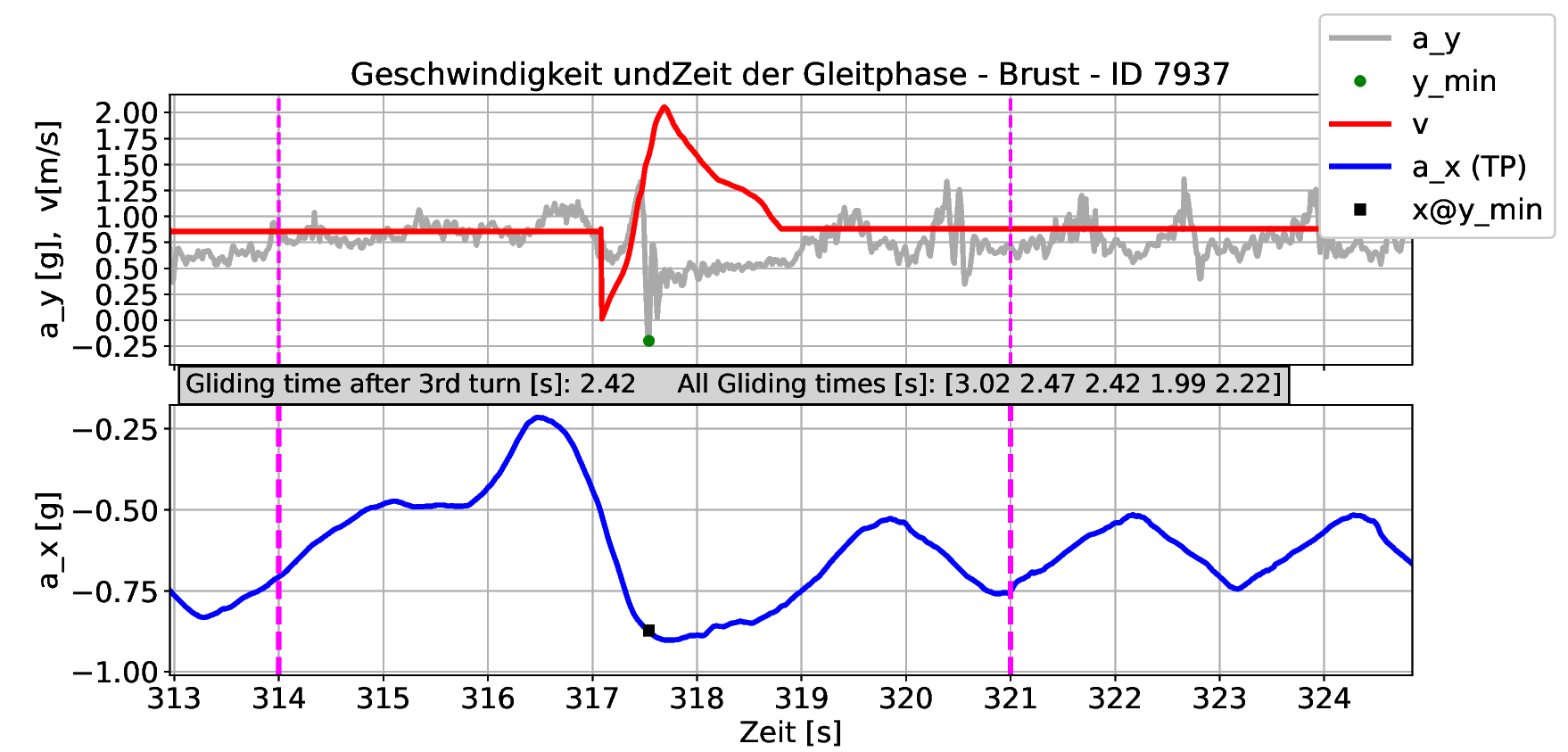
Fig. 5: Enlarged section, example of repulsion (between ~317s and ~ 318s): gray = raw acceleration signal in y-direction (g), red = calculated repulsion velocity (m/s), blue = low-pass filtered acceleration signal in x-direction (g).
Vital parameters
As can be seen in Fig. 6, despite ideal water shielding, no valid heart rate data could be measured with the red/infrared LED used. The reason lies in the strong influence of the head movements. In the measurement shown, the heart rate supposedly decreases during the load while swimming, whereas the opposite should be the case.
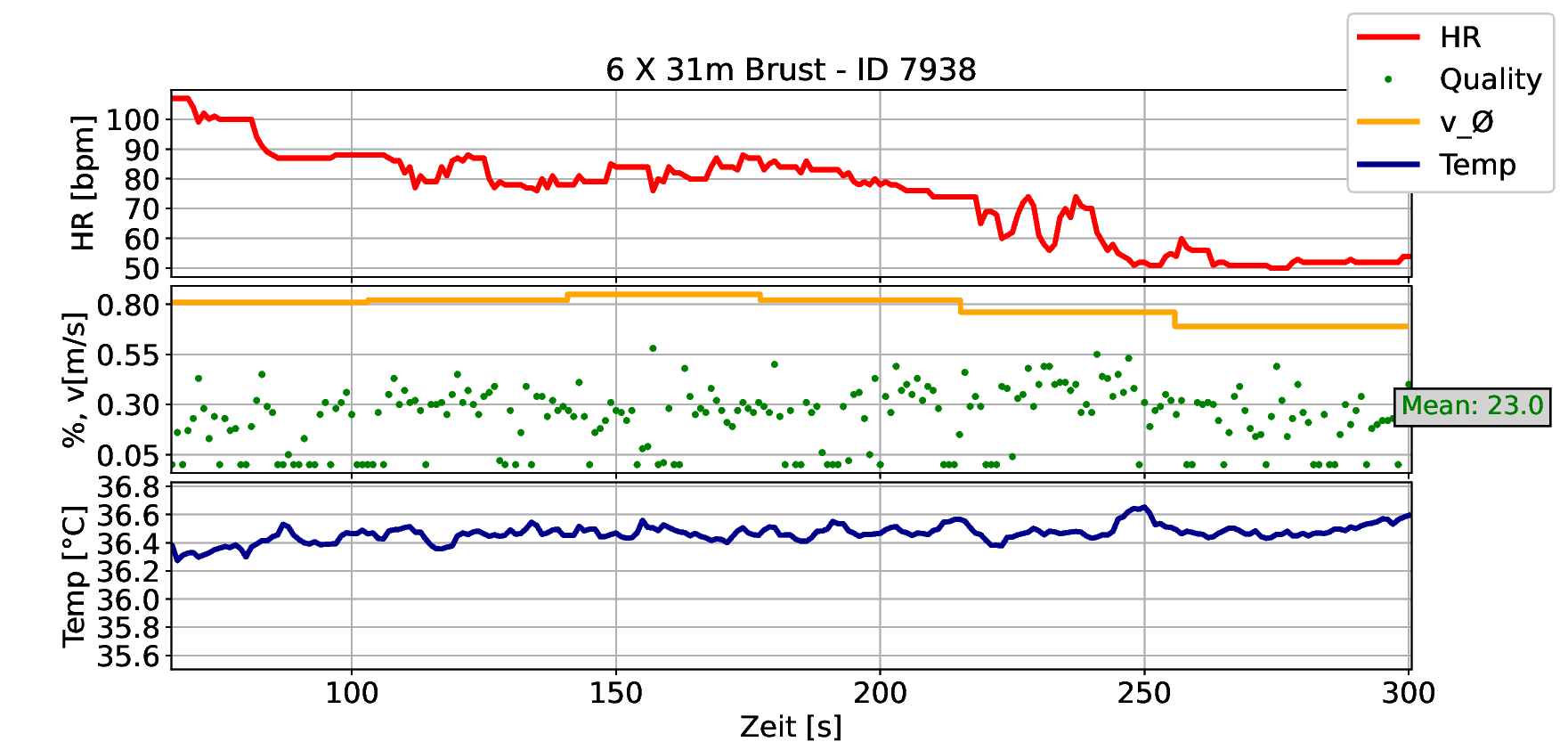
Fig. 6: Example of a vital parameter measurement. Measurement recording of heart rate (bpm), average speed (m/s) and body temperature (°C).
When the alternative chest technique was used, with the head held above water and no strong head movements, valid heart rate data could be measured:
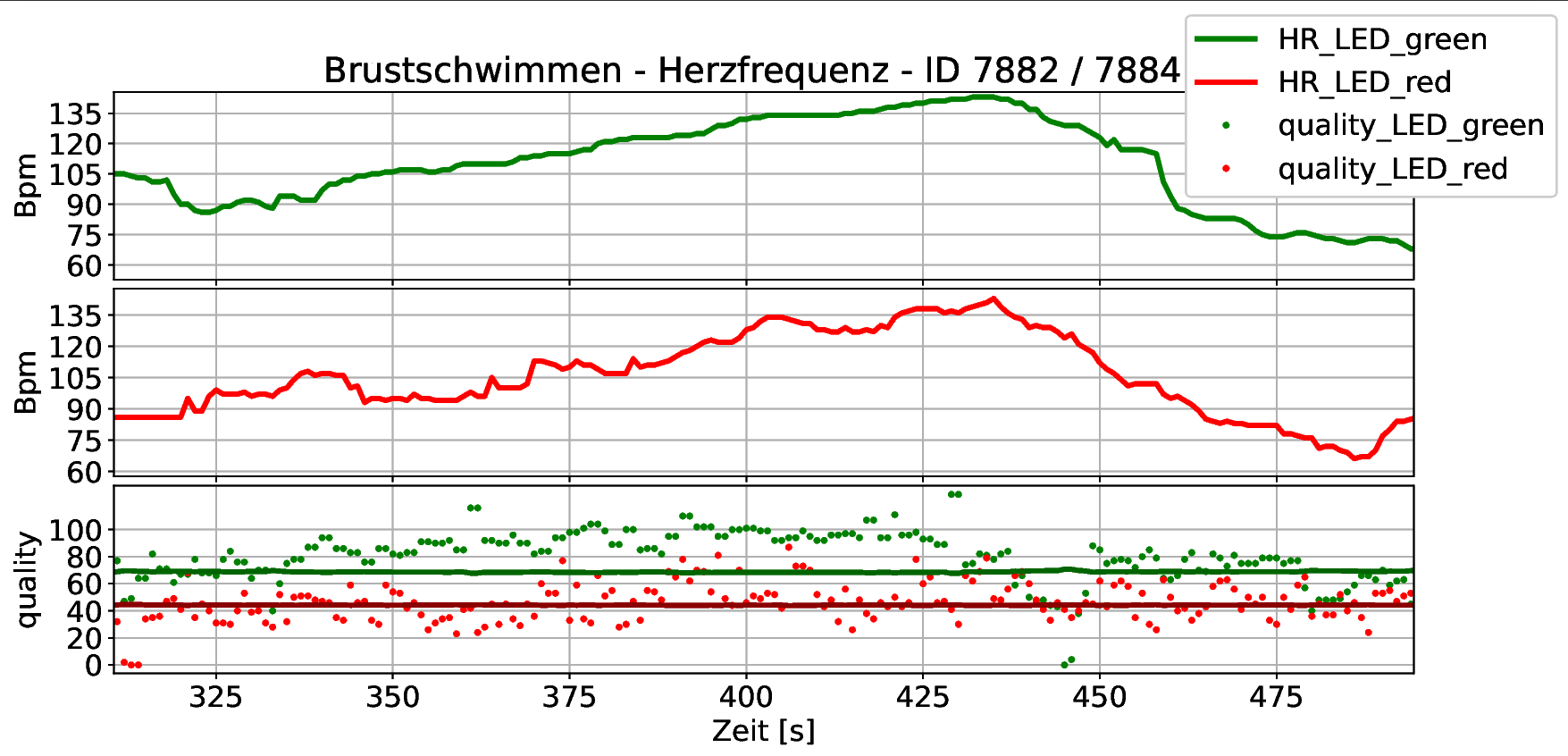
Fig. 7: Measurement of heart rate during breaststroke with head position above the water. A prototype with a green LED is worn in the left ear and a red/infrared LED in the right ear.
Temperature measurement was possible due to the additional shielding of the ear and the measurements were valid.
Final concept
The final concept after evaluation of a utility analysis and execution of prototype tests is as follows:
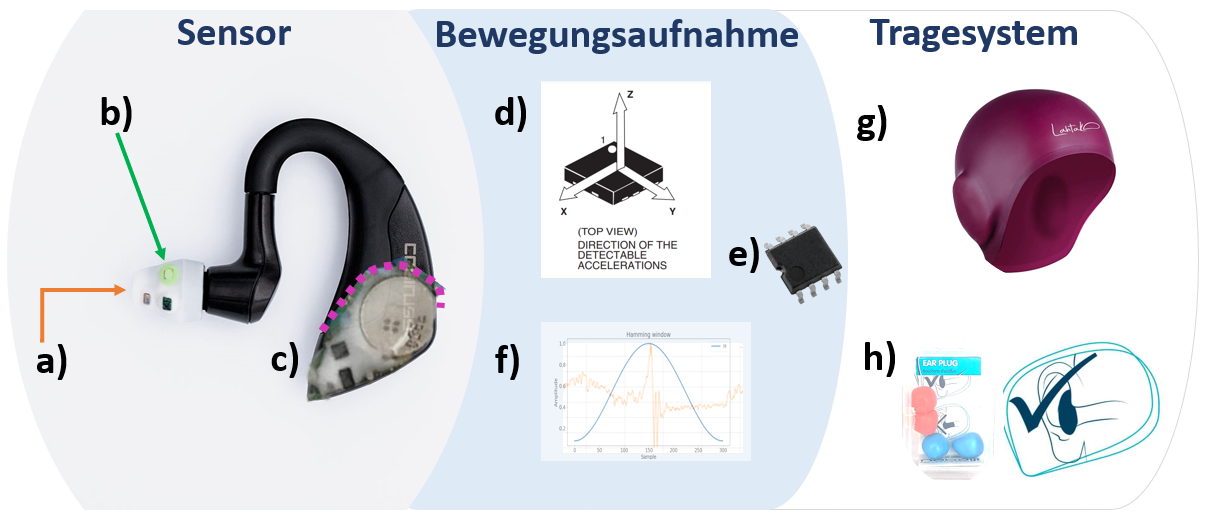
To protect the sensor from moisture, a silicone adhesive is applied to the sensor head opening (a) and the electronics are sealed by a silicone-based casting resin potting (c). A green LED is installed for the PPG sensor (b). Thanks to the 3-axis accelerometer, the recording of movements and accelerations is possible (d). To counteract potential data loss, a memory card is installed for internal data storage (e). Data analysis is based on digital signal processing (f). To optimally protect the ear and the sensor from water, both an ergometric swim cap (g) and an additional sealing of the ear cup with a silicone ear plug (h) are used.
Conclusion: in-ear sensors are suitable for use when swimming
It was possible to protect the electronics of the cosinuss° sensor from moisture simply by casting resin, so that it could be used for swimming. The design or construction of the sensor itself did not have to be changed.
Signal processing of the acceleration data made it possible to automatically evaluate the pull and breath rates, glide phases, turns, push-off sequences, and push-off and average speeds.
Temperature measurement in the auditory canal was also possible through appropriate shielding during swimming.
Measurement of heart rate was possible with little head movement during the swim and during breaks. However, too much head movement currently prevented the measurement of valid heart rate values.
Outlook: Optimizations and further fields of application
For future studies, a systematic evaluation based on measurements of several swimmers in combination with video analyses would be useful.
In order to obtain valid heart rate measurements, adjustments should be made to the algorithm for future measurements. In this context, an analysis of the PPG signal with regard to the influence of head movements is particularly relevant. On the other hand, measurements should be performed with a PPG sensor that uses a green LED. Based on the results obtained so far, it can be assumed that due to the different penetration depth of the light, a measurement with a green LED is less susceptible to interference from head movements.
For future measurements, a further development of the internal data storage and transmission by means of buffering is also useful. In this way, data loss due to intermittent connection problems during live measurements can be counteracted.
In addition to use in swimming, a future application of the modified cosinuss° sensor is also conceivable in diving. Here, in addition to the vital parameters already measured, oxygen saturation (SpO2) is of particular importance.
The modified cosinuss° measurement system is thus suitable for recording performance-specific data and vital parameters in water sports as well – both for hobby sports and in the school environment.
Background information: STEM on the Move
As part of the STEM on the Move project funded by the German Federal Ministry of Education and Research (BMBF), students are to be taught scientific knowledge through fun sports. In terms of swimming, this means that the further development of the cosinuss° sensor system will be used in practical exercises in middle school swimming lessons. In this way, topics from physics, biology and technology will not only be taught, but also directly experienced by the students.
More information on this project: https://www.cosinuss.com/de/2019/06/28/durch-freude-an-der-bewegung-mehr-freude-an-mint/
Quellen / References
- Elimination of the orientation change due to head movement by filtering the acceleration data. Calculation of the repulsion velocity from the repulsion acceleration by considering the total acceleration and numerical integration according to Stamm et al. (https://www.sciencedirect.com/science/article/pii/S1877705813011181). Detektion von Wenden, Zugzahl, Gleitphasen und Atemfrequenz durch Frequenzanalyse (FFT) und Betrachtung der Maxima und Minima im Beschleunigungssignal.
